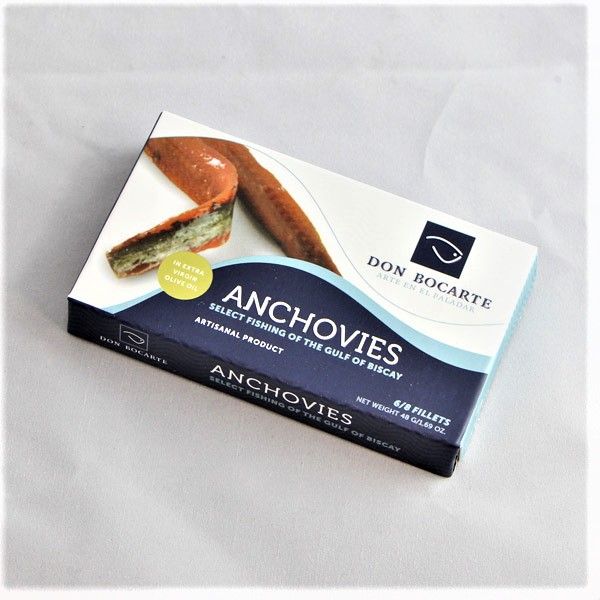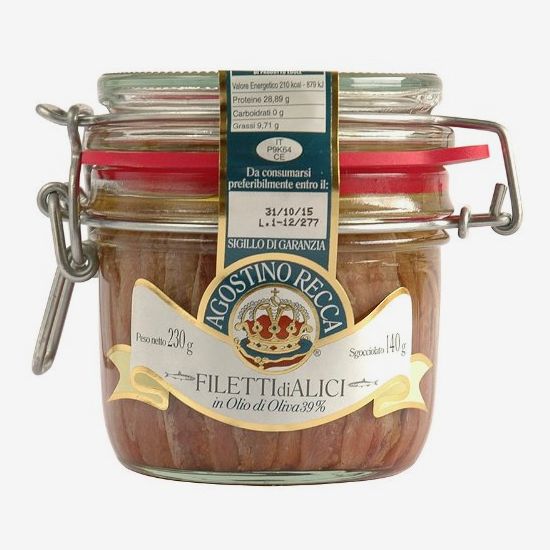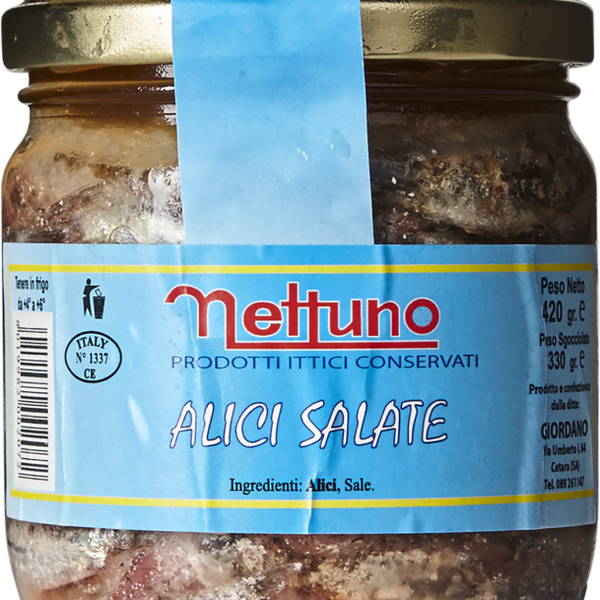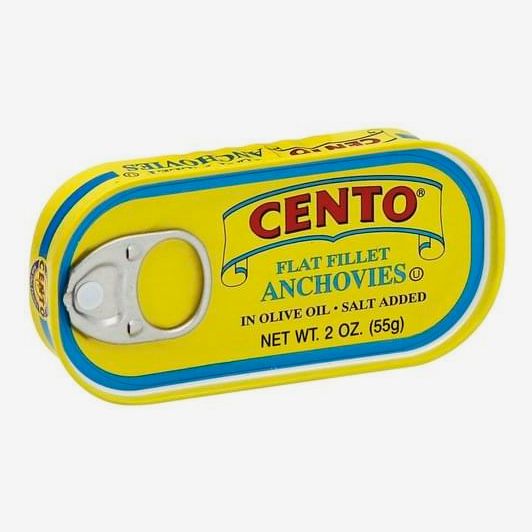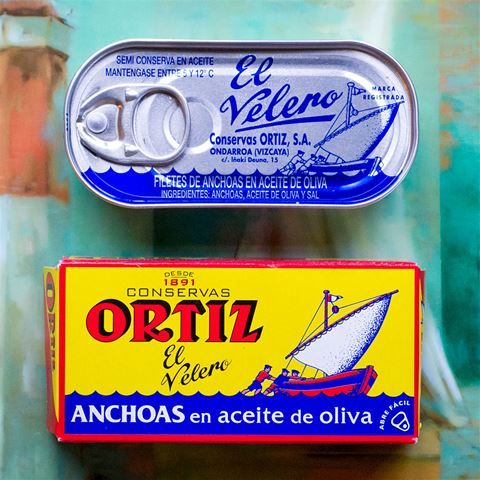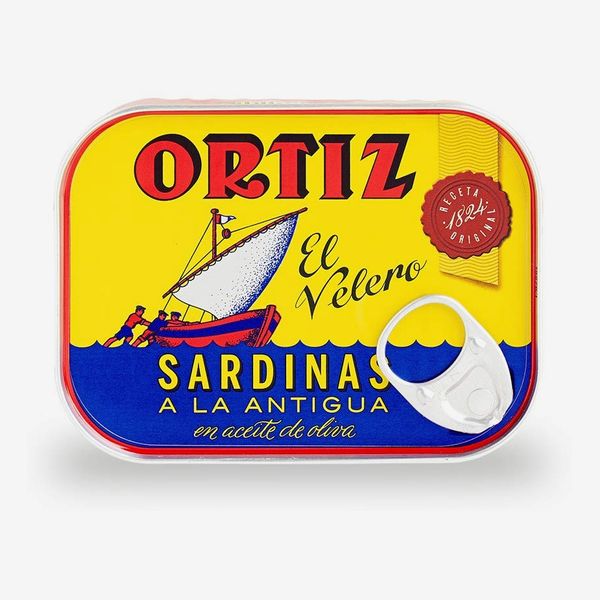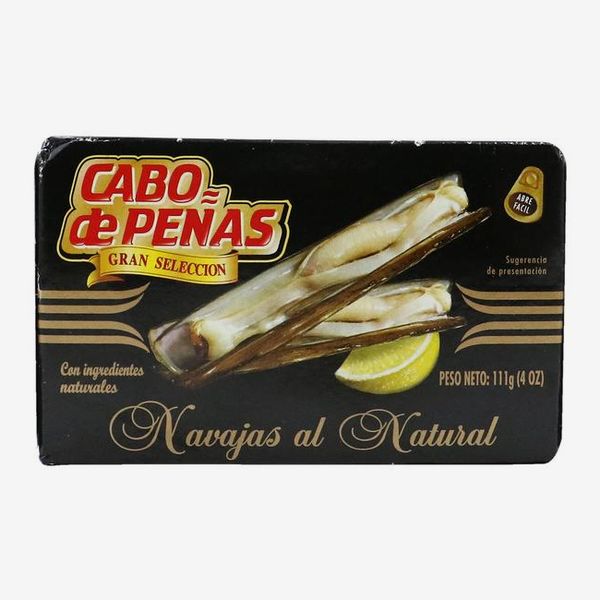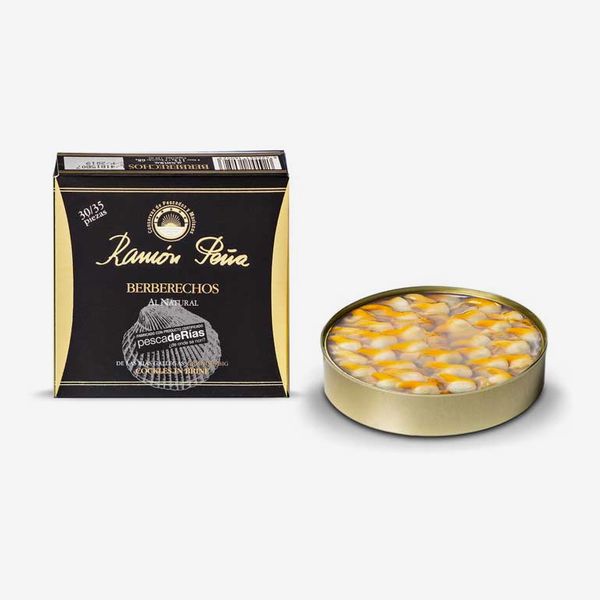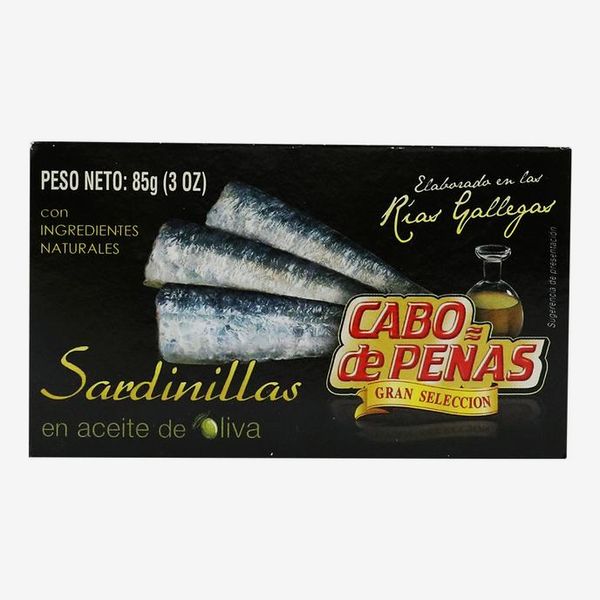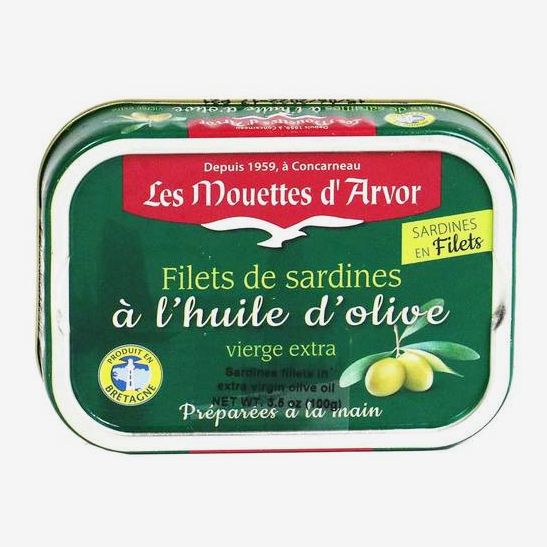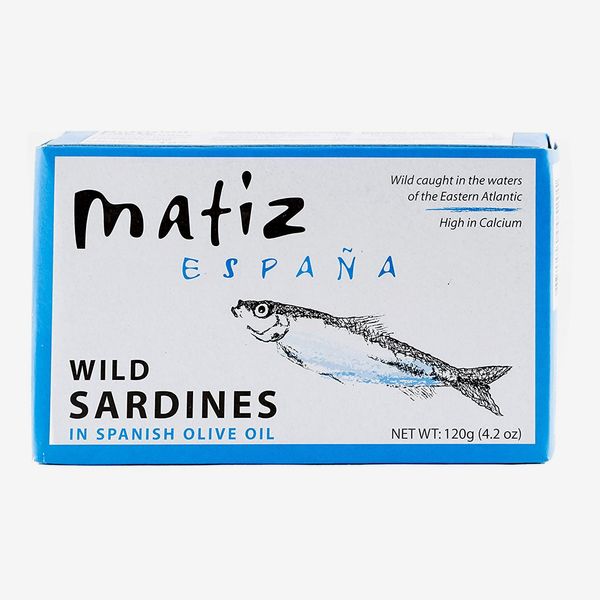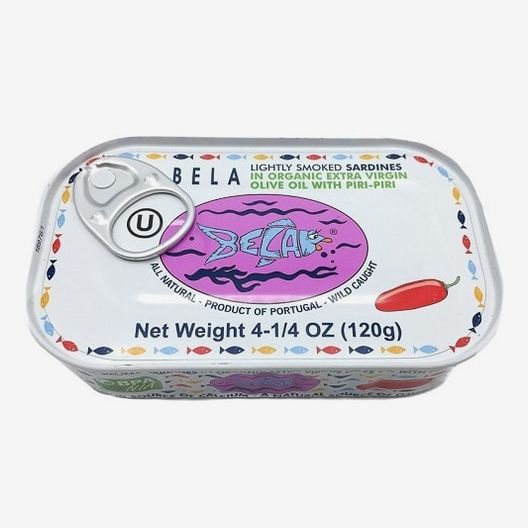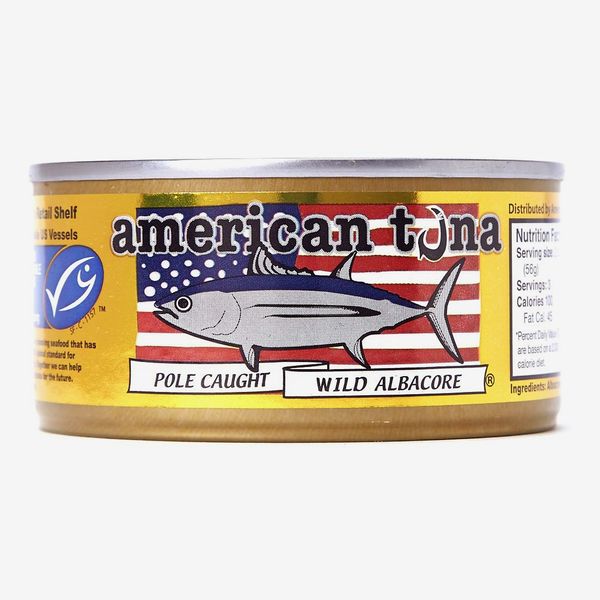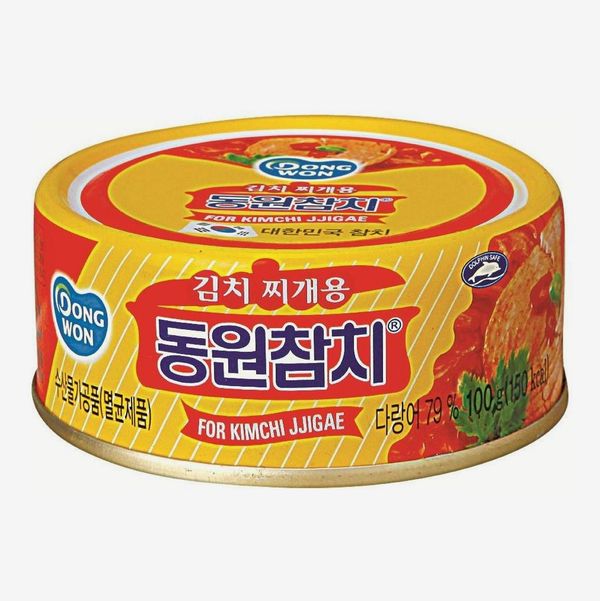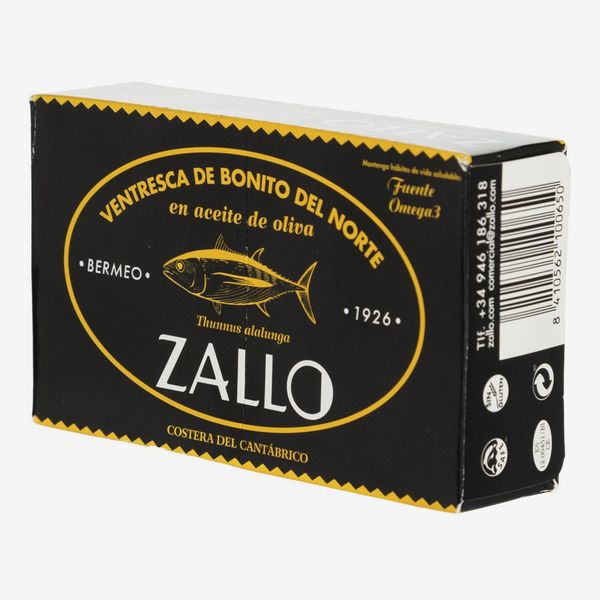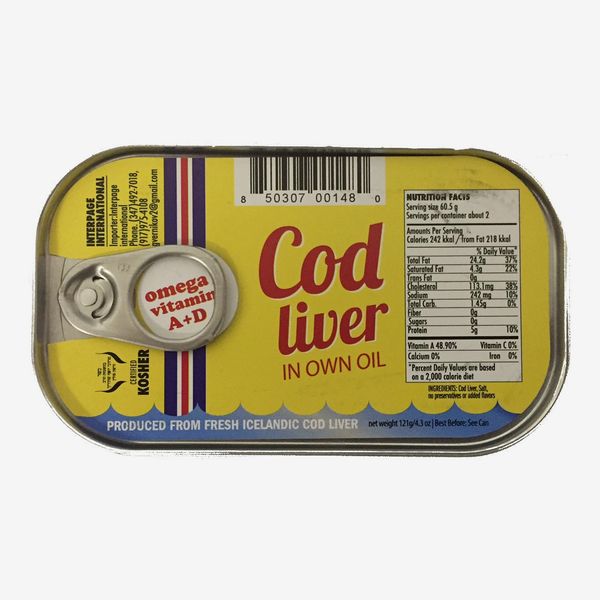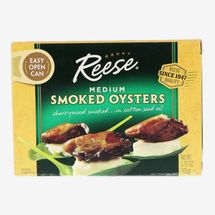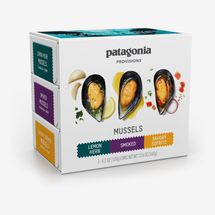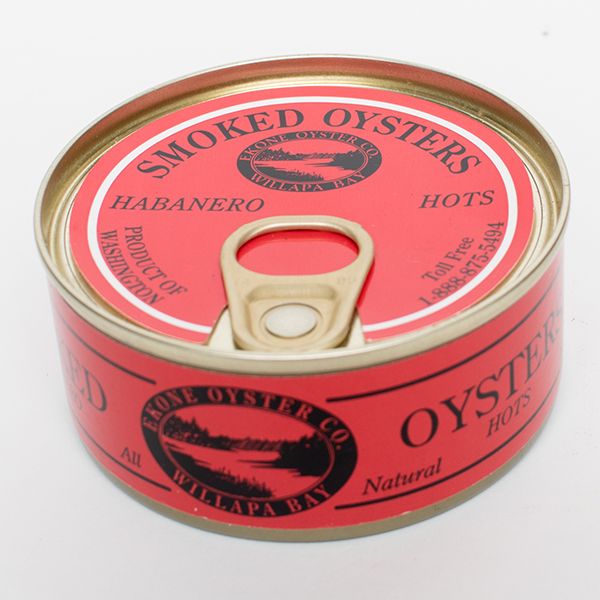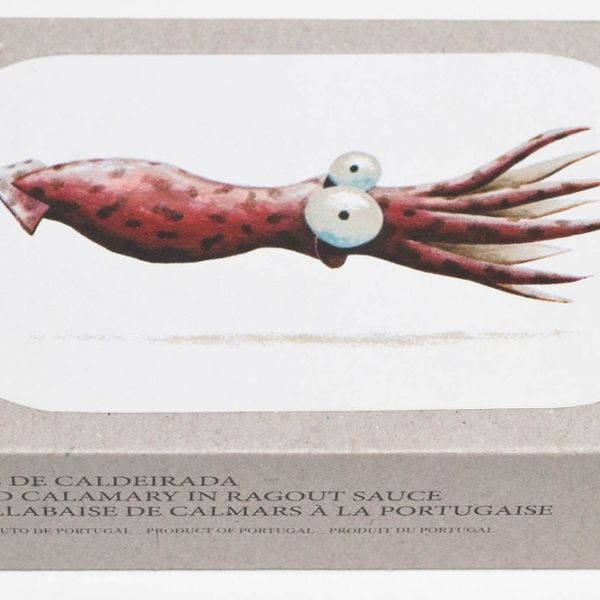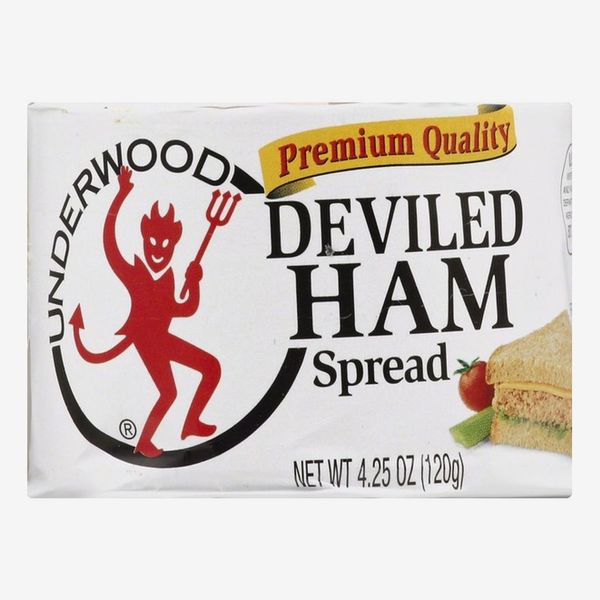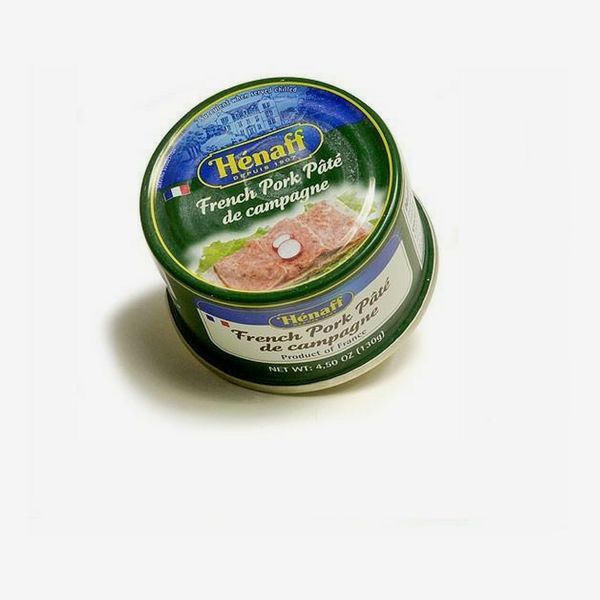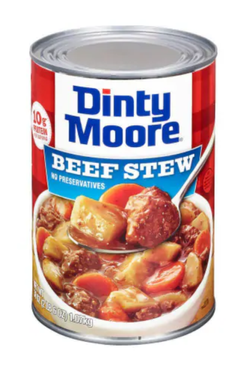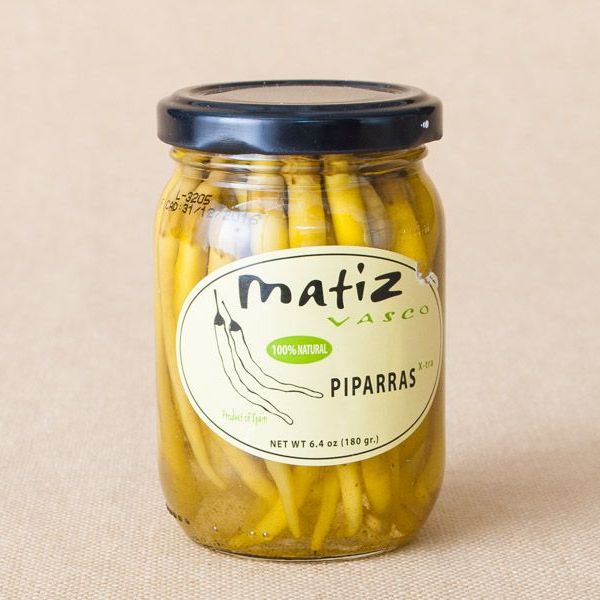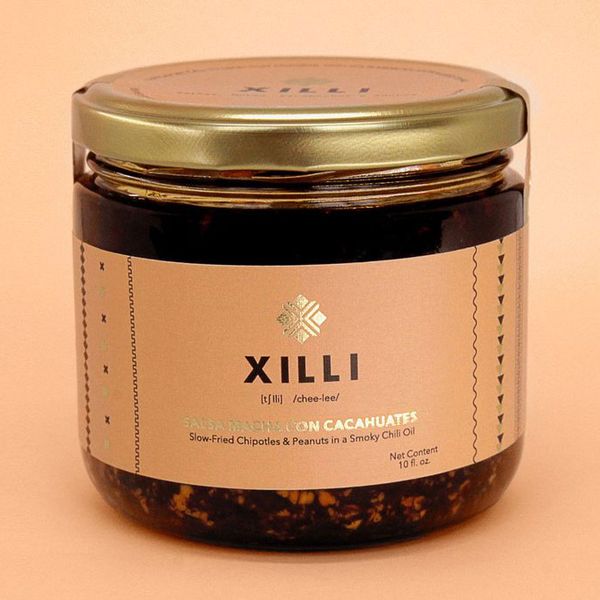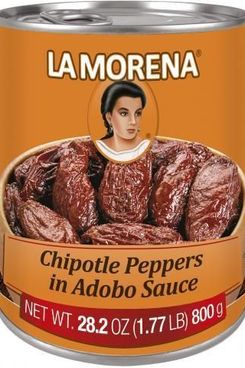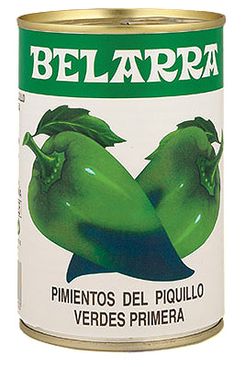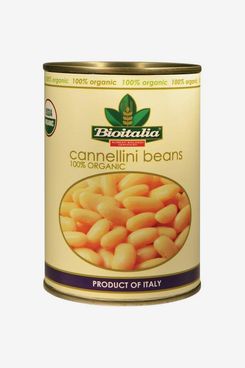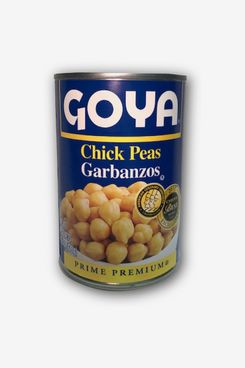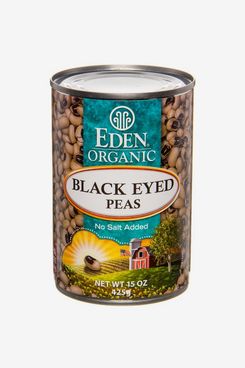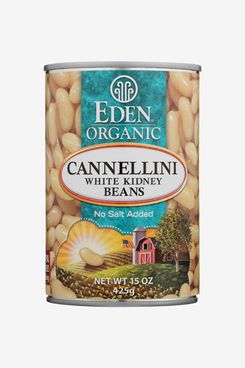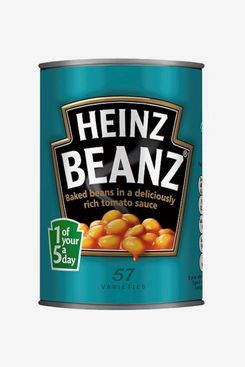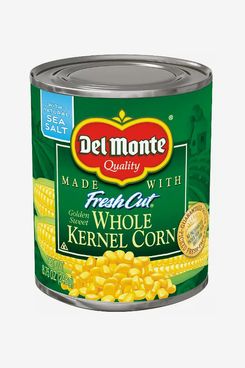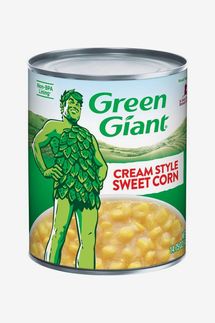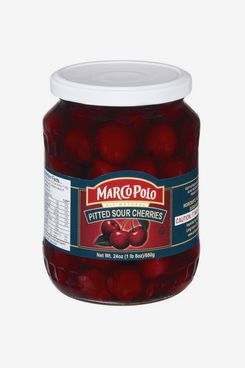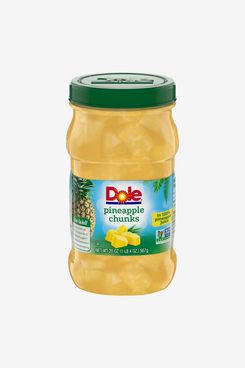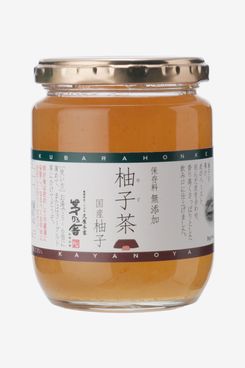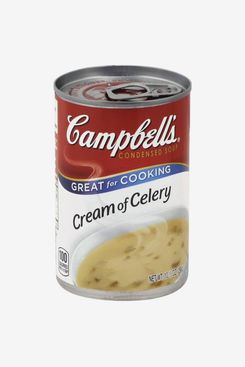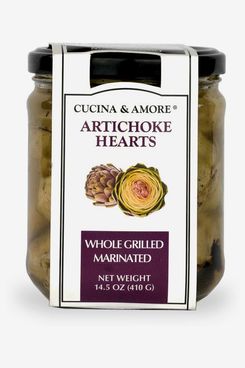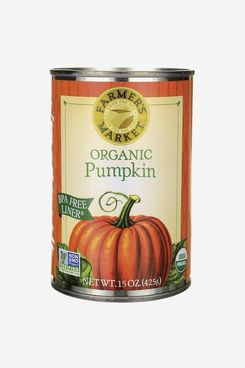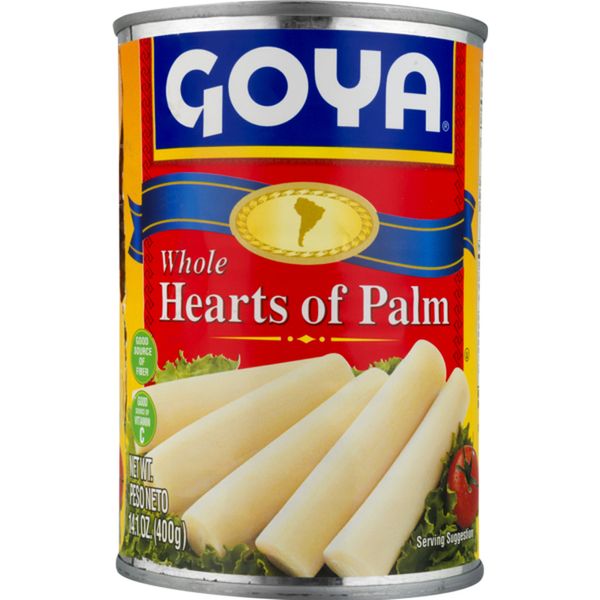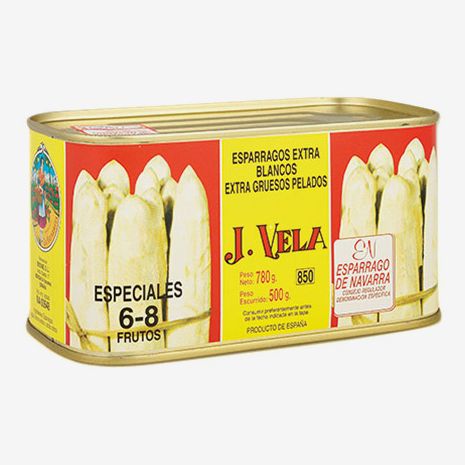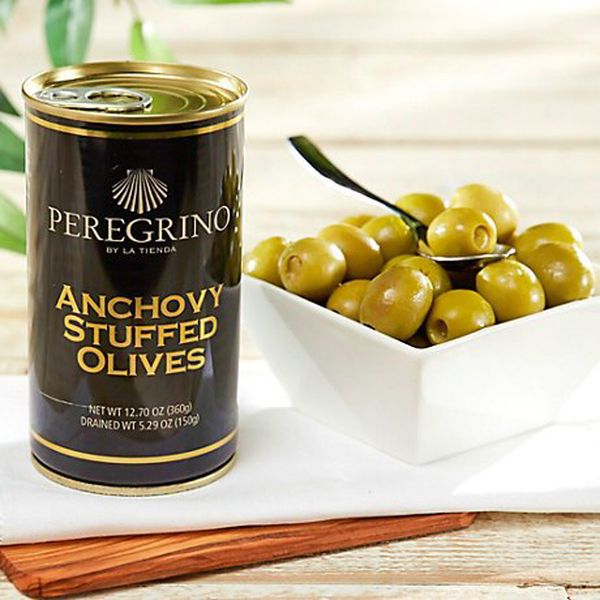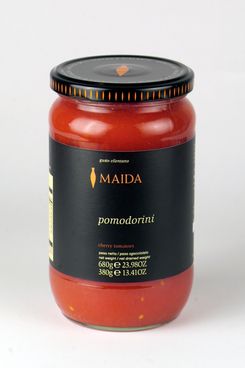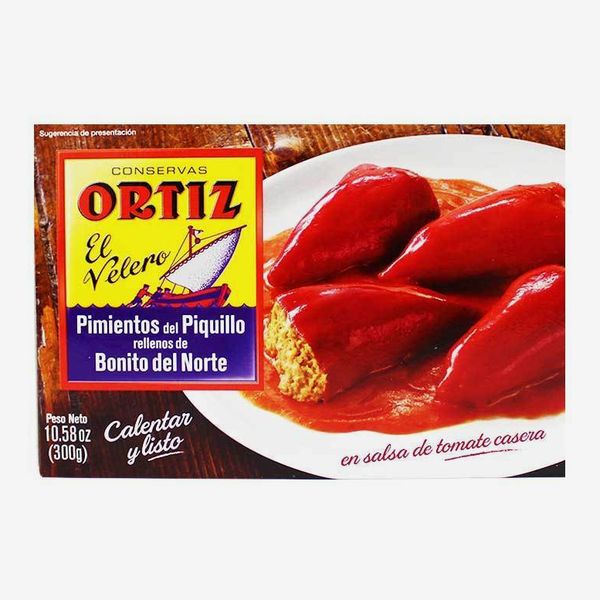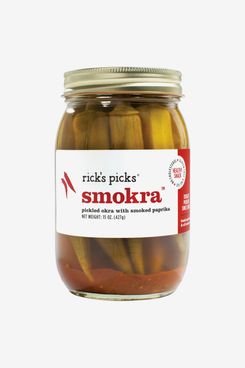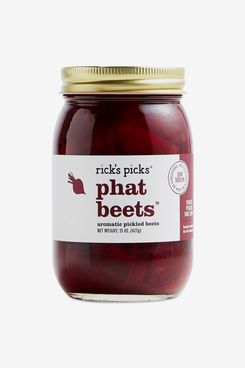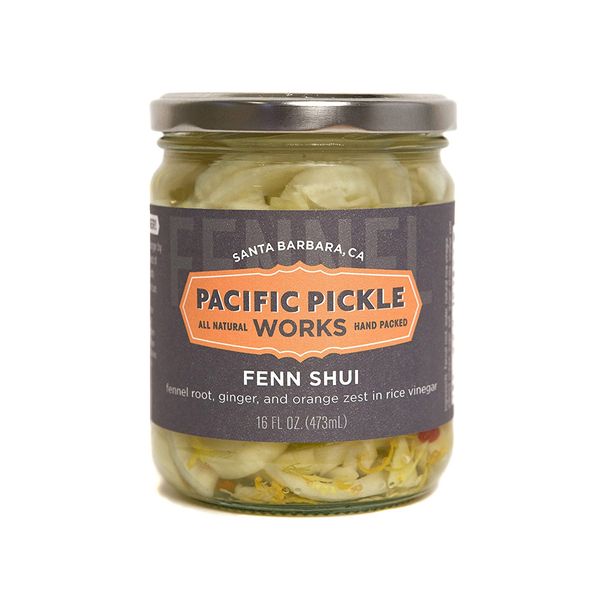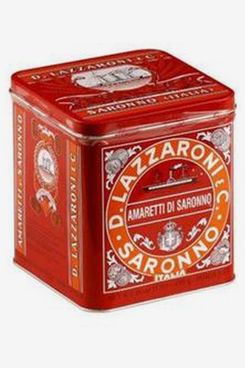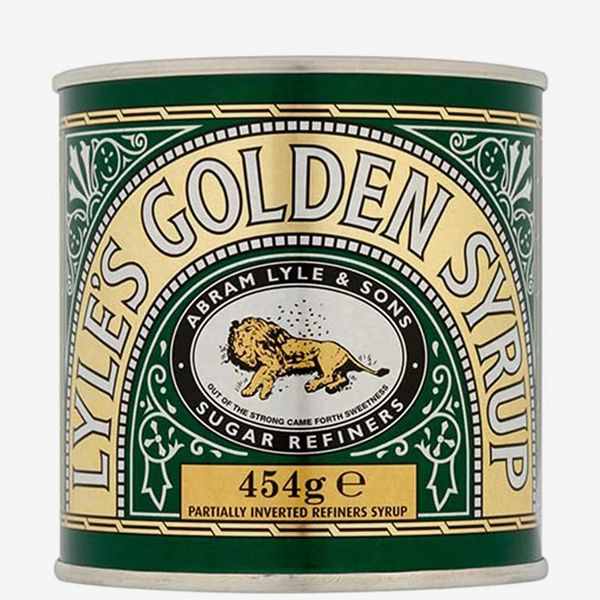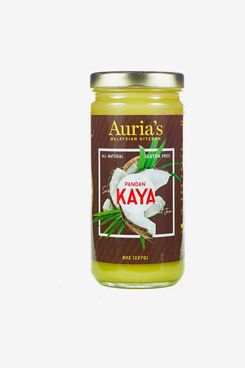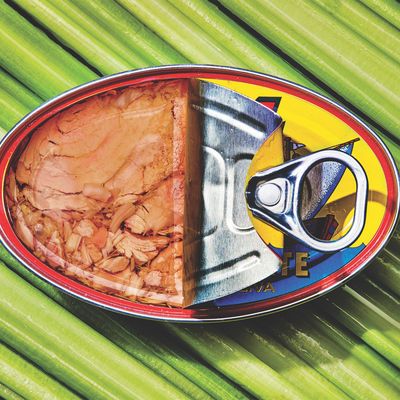
The early months of the pandemic reacquainted many of us with shelf-stable food items — according to reports, Goya’s sales shot up 400 percent in March 2020 alone. Anchovies, long the topping “held” from a dish, quickly took center stage on Instagram (in sandwiches, on heaps of linguine), and humble canned tuna shifted from the back of the pantry to front and center. And while grocery-store trips have certainly become less threatening since that time, the virtues of canned and tinned foods remain: They’re versatile, long-lasting, and surprisingly flavorful. Not to mention the fact that there’s something specifically delightful about eating a perfectly salty, spicy, or sweet item (whether it’s a smoked oyster or a sour cherry) plucked straight from a completely contained package. To find out the tinned, jarred, and canned foods chefs and home cooks stock their pantries with — pandemic or not — we asked everyone from Ernesto’s Ryan Bartlow, who suggested a tin of splurge-y white asparagus, to Nom Wah’s Julie Cole, who recommended stocking up on Campbell’s Cream of Celery — which she calls “the Ferrari of canned soups.”
Four of the chefs and home cooks we talked to topped their list of tinned goods with Don Bocarte Anchovies. “The creme de la creme of anchovies are Don Bocarte salt cured anchovies packed in olive oil,” says Nialls Fallon, a partner at Hart’s, Cervo’s, and The Fly. “They taste like butter and melt in your mouth — I could drink the oil when I’m done it’s so damn good.” Fallon told us that the anchovies come from the Bay of Biscay and are “painstakingly gutted and fileted by hand, then packed in large barrels in concentric circles with salt added after each layer.” Then they’re aged for several months, and rinsed and packed by hand in Spanish olive oil. Danny Bowien of Mission Chinese is a fan, too, as is Julia Sherman, of Salad for President and Angie Mar, chef at the Beatrice Inn.
Best tinned and jarred fish
Michael Schall, co-owner of Bar Camillo and Locanda Vini e Olii says that his restaurant’s “No. 1 choice” for tinned food are these anchovies from Agostino Recca. “I am just addicted to them, as are a lot of our customers.” (This customer can attest to their addictive qualities.) Schall says the anchovies have a just-right amount of saltiness, and are “big enough to feel substantial if you are eating them by themselves.” But if eating straight anchovies sounds like a lot, Schall says they’re great for cooking, too: “Melt them in the pan with some olive oil and a clove of garlic, toss with freshly cooked spaghetti, and you have one of the best all-time afternoon pasta dishes.” Chef and farmer Phoebe Cole-Smith is a fan of the Agostino Recca anchovies, as well.
“I’ve ate more than my fair share of anchovies — just ask my editor, who has politely tried to explain there are other things to write about— and I don’t think there are any better on the planet than these,” says Grub Street writer Chris Crowley of these sea salt anchovies from Nettuno. “They’re kind of a splurge, but they go a long way: preserved only in sea salt, they’re plump and possibly as close to a hit of pure MSG as you can get.”
For something a bit less expensive, Carolina Santos Neves, executive chef of American Bar, recommends this Cento tin, which she says, despite the low price are still high-quality enough to eat on their own.
Another less-expensive anchovy option comes to us from chef Mia Lillingston, who says “not only is the packaging on Ortiz anchovies so aesthetically pleasing, they’re also good quality, prepared by hand and totally delicious when simply eaten on toasted bread with olive oil.” Lillingston says she’ll also add these to salads or melt them into sauces “for that umami kick.”
Bart van Olphen, sustainable fishing advocate, chef, and author of The Tinned Fish Cookbook, is a fan of Ortiz tinned goods, as well, and told us about these sardines. “I love sardines, but buying the right quality makes the difference between having a great experience or never wanting to eat them again,” he says. “Ortiz is famous for its quality. The cooking process is very particular. The sardines are gutted and then precooked before being trimmed to the size of the can. Cheaper brands only cook the sardines once.”
If clams are more your thing, Sherman told us that these from Cabo de Penas — “I love all the tinned seafood by Cabo de Penas,” she says. “But these are especially good. They are super clean and briny — eat them straight from the can.”
“My favorite splurge is a tin of cockles from Ramon Pena in Spain,” says Fallon. “They’re expensive, but worth it.” Fallon says the cockles, which are tiny clams, are the size of a dime and tear-shaped. The cockles are pricey because of how difficult they are to harvest: “They are hard and dangerous to source, by hand from the rocky coastline, then meticulously and perfectly cooked, removed from their shells, and placed in order in a round tin,” Fallon says. “Their milky white color is surrounded by clear briny salty water — it’s so elegant, and pure and really a treat.”
Nick Perkins, partner at Hart’s, Cervo’s, and The Fly, says that Cabo de Penas is also the go-to brand of tinned fish for his restaurants. “They’re just old school and really solid,” he says. “They also just do really solid sardines and mackerels, which are cost effective.” His favorite are the brand’s baby sardines.
“These are sustainably certified sardines, and beautifully hand-packed with high-quality olive oil,” says Fallon. “A real savory, firm and earthy style.” He told us he’ll go for the classic plain olive oil, or the ones packed with dried chillies.
This pack of sardines comes recommended by Alissa Wagner, co-owner of Dimes (who also told us about her favorite spices). “They’re a great option for both your health and the health of our planet,” she says. “Sustainable and packed with Omega 3’s, these little fish are a great upgrade for simple salads or enjoyed on some grilled bread with roasted cherry tomatoes and fresh herbs.”
Andy Xu, Executive Chef at The Odeon, told us that Bela is his preferred sardine brand: “They’re lightly smoked, so there’s an added depth of flavor,” he says.
Sometimes you just want good old-fashioned canned tuna. Van Olphen suggests trying this tin, which is from a brand founded by one of the families behind the American Albacore Fishing Association. “Their West Coast fishery was the first in the world to obtain a certification for seafood sustainability from the Marine Stewardship Council,” says Van Olphen.
“I’m honestly just eating a lot of canned tuna, like Jessica Simpson,” says Bowien of his quarantine meals. “In Korea, canned tuna is such a thing, and you can get it at 711, open it up, and just eat it — especially the kimchi-flavored ones.” Bowien says this tuna from Dong Won is one of his favorites. “I eat it a lot — it’s good quality canned tuna, not fancy — I literally open up the can and dump it on top of hot rice.”
Ryan Bartlow, chef-owner at Ernesto’s, says that when it comes to tuna, this, from Zallo, is an easy favorite. “It’s from Bizkaia, Spain, and is perfect eaten on its own, or doused with a little minced onions, salt, olive oil and espelette,” Bartlow says. “At Ernesto’s we serve them with our Gildas.” He also notes that the stately packaging makes it a great gift for the friend who can never have too much tuna (which, right now, is most every non-vegetarian friend).
Van Olphen told us he believes in the “head-to-tail philosophy” when it comes to fish: “Where we’re not just eating the fillet, but also the cheeks or liver, for example.” He describes these cod livers as “soft” and “elegant” and says they work with lots of different dishes. “One of my very favorite ways is to serve it with some reduced orange juice mixed with a bit of lime and sesame oil, sprinkled with pomegranate seeds and pink peppercorn on top,” he says.
“Ever since I was little I’ve loved large smoked oysters or mussels,” says Carolina Santos Neves, executive chef of American Bar. “My pick these days are Reese and Patagonia Provisions for their sustainably sourced Mussels — I’ll eat them plain or on toasted buttered sourdough bread.”
If you want smoked oysters with a bit more zing, Fallon says these Ekone oysters are one of his favorites. “You can have them as a snack with a beer,” he says. “They’re hot! And chewy, and smoky, and really good with mayo or cream cheese on a cracker.”
“The baby squids are prepared by hand — they removed the tentacles and stuff them into the tube of the squid, then hand pack them with a rich tomato ragout sauce,” says Fallon of this spicy option. “Smoky and meaty in flavor and texture, really delicious.” He’s a fan of the baby octopus in olive oil, as well.
Best tinned and canned meats
“I’ll admit that I haven’t had deviled ham spread for a very long time, but one of my favorite sandwiches as a child was this stuff on pepperidge farm white bread with a thin layer of butter,” says Cole-Smith. “I have a few tins of it in my emergency preparedness food kit, because it means I can quickly relive my childhood, using crackers as a vehicle.” Cole-Smith says that in a pinch, “and if you close your eyes,” the deviled ham spread is like “a ‘poor man’s jambon au beurre.’”
Perhaps you prefer pâté. Food writer Ashley Mason says that a can of this pork pâté will have you feeling like you’re enjoying “a lazy afternoon on the French countryside” in no time. “Just add a bottle of wine, a baguette, and some crunchy cornichons,” she says.
Wilson Tang, owner and operator of Nom Wah, says this stew is “always dear to my heart.” Similar to Cole-Smith’s deviled ham, the stew is a bit nostalgic: “When I was a kid, it would be a quick after-school snack that I could mix up by myself when my parents were at work — I’d heat up the can and add it to rice,” Tang says. “It made me feel like a mini chef.” For the “grown-up version” Tang says he’ll throw it in his wok with soy sauce and chili bean paste, and have it with a side of rice.
Best tinned and canned peppers and chillis
“I discover a lot of my favorite cans and glass jar items from Formaggio,” says chef and food artist Laila Gohar. “They do a really great job at finding products from around the world that are really delicious.” One of her favorite jarred goods from Formaggio are these peppers. “They’re spicy and briny and add a nice bite to a lot of dishes,” she says. “I just like to nibble on them plain, too.”
If you’re looking for a chili sauce with a smoky flavor, Wagner suggests these Xilli Chipotles. “Blend them with yogurt and a little lime juice and salt for a fantastic sauce,” she says. “I love this one on fish tacos.”
A less-expensive chipotle pick comes to us from Cole-Smith, who says, “so many dishes benefit from a spoonful of this stuff, right out of the tin: BBQ sauce, homemade or bottled; in spicy toppings and taco sauce, combined with sour cream or plain yogurt; for marinating meats for grilling; in braises and chilis.” She says that a little goes a long way, and adds that “any left over can be stored in a jar in the fridge for quite awhile.”
“One of my favorite canned/tinned/jarred foods are green piquillo peppers from a company called Belarra,” says Ryan Bartlow, chef-owner at Ernesto’s. “They are based in Navarra, Spain, and it’s rare to find or use them here.” Bartlow says the peppers are “less sweet than the traditional red piquillo pepper and occasionally have a bit more spice,” adding that they’re useful for adding depth to stews and sauces. “I like to occasionally tear them and throw them in the batter of my tortilla de patatas,” he told us. “They are also great stuffed with tuna salad or braised lamb neck.”
Best canned and tinned beans and legumes
Wagner calls beans and legumes from Bio Italia “a lifesaver in terms of throwing a meal together quickly.” She suggests seasoning them with olive oil, fresh lemon juice, chili flakes, and salt. “Toss in fresh herbs, red onion, and veggies for a healthy and satisfying dinner.”
“Chickpeas are incredibly versatile — you can make cakes with them, and even use the liquid as an egg alternative,” says Nasim Alikhani, owner and chef of Sofreh. “I’ve been using chickpea liquid — aquafaba — forever to make meringues.” And while she says she’s not picky about the brand of canned chickpeas, Goya is a reliable option.
“For years, I have adopted the tradition of making Hoppin’ John, a delicious southern dish involving ham hocks, long-grain rice, tomatoes, and black-eyed peas on New Year’s day to bring luck in the new year,” says Cole-Smith. She told us she’ll usually insist on soaking and cooking the beans herself, but when she wants a quick option, she’ll use Eden Organic’s.
Cole-Smith is a fan of Eden’s cannellini beans as well, which she calls “an essential cupboard item in our family.” She’ll use them to make “the quickest last-minute dip,” which involves processing the beans with garlic, olive oil, toasted fennel or cumin seeds, lemon juice, and sea salt.
And if you want some comfort food, Lillingston knows just the thing: Heinz baked beans. “I mean who doesn’t like baked beans on toast or in a jacket potato with an unhealthy amount of melted butter, topped with a mountain of cheese?” she says. “They’re the food equivalent of a hug from your mum.”
Best tinned and canned fruits and vegetables
Along with the sardines mentioned earlier on this list, Xu says canned corn is his other pantry staple. “Corn is easy to make — the kernels can be sautéed by themselves with just salt and pepper, or tossed into a salad or pasta,” he says.
“The creamy type,” he says, “is perfect for an Asian style corn egg drop soup with shredded chicken.”
“I believe in a time of crisis people need to have fun stuff, luxurious stuff — how many beans are you going to eat before you just hate beans?” says Alikhani. “Sour cherries are a delicacy in our cuisine, and I use them in desserts, of course, but I also use them to make sour cherry rice with meatballs.” Alikhani says that the sour cherry turns rice a beautiful burgundy color, and that you can also cook cherry into the meatballs. “You can lace the base of the meatballs with sour cherry, instead of carrots,” she says. “I also save the liquid and reduce it with little extra sugar as garnish for ice cream and desserts.”
“I know this seems extremely basic, but hear me out: canned pineapple can be really useful for making cocktails,” says Crowley. “Sure, everyone is poring over cooking projects, and honestly, maybe you don’t want to bother with a whole pineapple when you’re cooking three meals a day — Pina coladas are supposed to be relaxing, right?” You can get your canned pineapple in chunk or ring form.
Annie Shi, owner and manager at King Restaurant, told us about this yuzu fruit preserve, which she says she hadn’t had since college but has returned to since quarantining at home with her parents. “My mom used to always bring it to me when she visited me in college, and lately, I have been making a syrup of it (basically mixing it with a little water) and then topping it with seltzer,” says Shi. “I had it the other night with a splash of gin for a pre-dinner spritz and it was unbelievably refreshing.” Shi adds that you can mix the preserve into cakes and loaves, as well. “It’s basically a more versatile and delicious orange marmalade,” she says.
“I grew up passing by the Campbell’s factory almost every day, so it’s been a big part of my life,” says Julie Cole, chef at Nom Wah Nolita. Campbell’s Cream of Celery is her favorite, and not just as a soup. “I like to joke that the cream of celery is the Ferrari of canned soups, since you can use it anywhere that you’d use heavy cream: casseroles, gratins, pasta, sauces.”
“The 24-hour produce stand/grocery store near me in Kensington carries a lot of Cucina & Amore products, and I’ve made my way through most of them,” says food writer and cookbook author Leah Koenig. “My favorite is the grilled and marinated whole artichoke hearts.” Koenig told us the artichokes are “briny and gorgeously charred” and make an “amazing” addition to a grain bowl, salads, or omelets. “On the artichoke theme, I also love their artichoke pesto, which has this rich, sultry texture and turns a bowl of spaghetti into something memorable with no more effort than twisting open the jar,” Koenig says.
Koenig also says she buys a lot of Farmer’s Market pumpkin puree: “It’s bright orange and super smooth with a sweet and earthy flavor — of all the canned pumpkin I’ve purchased, it tastes the closest to when I make pureed pumpkin from scratch.” Koenig uses it to make pancakes, and also in a pumpkin pie smoothie for her five-year-old. “It has the puree, yogurt, banana, maple syrup, cinnamon, and a little milk,” she says. “My son is fairly vegetable averse, so it is an easy way to get more vitamins in his diet.”
“I’m half Brazilian and lived there as a kid, and hearts of palm were just something we ate often,” says Neves. “We’d chop them up and add them in salad, or just eat them straight out of the can — I don’t have a particular brand I’m partial to, except I do love Goya Products.”
These tinned white asparagus also come recommended by Bartlow. “We use this product in the restaurant in two different dishes,” he says. “It’s a component in our Ernesto’s salad, as well as a white Asparagus pintxo in the pintxo bar … white asparagus conserva is always in the house.”
It wouldn’t be a list of tinned and jarred foods without some olives, and food writer Ashley Mason prefers the anchovy-stuffed variety. “The buttery, extra-large Manzanilla olives are an ideal vessel for carrying bites of mild white Spanish anchovies into your mouth,” says Mason.
Gohar told us she’ll always keep canned tomatoes in the house, especially when fresh tomatoes are out of season. “I don’t buy tomatoes when they’re not in season — I just don’t think it’s worth it,” she says. “In the winter months though, when I do crave them, or when I want to make a recipe that calls for tomatoes, I usually end up using good quality canned tomatoes, like these Maida ones.”
Mason says that the Spanish peppers used in these are “fire-roasted before being stuffed with fatty Spanish tuna.” Mason suggests having them with cheese and crackers, or if you want something more hearty, “Swap the Ritz for a toasted, sliced baguette and you have tapas.”
“Nothing beats Smokra, it’s just on point,” says Neves. “Whenever I see it at the market I buy it.” In the past she says she has used the jarred okra on cheese boards at dinner parties — “but now, in isolation, I just have more for myself.”
An equally cheese board-worthy pick comes to us from Mason, who notes that the Brooklyn-based company “softens the vegetable’s usual earthy flavors with a mélange of ginger, lemon, cider vinegar, and allspice.” Mason says the beets taste “almost autumnal” and go well with goat cheese or tossed in a salad.
Mason is also a fan of this jarred fennel root, which is pickled in rice vinegar with ginger, orange zest, and fiery Thai chiles. “They’re as crunchy and refreshing as cucumbers,” she says. “Try them in your next burger.”
Best tinned and canned sweets
“For years, we had these beautiful little Italian cookies only at Christmas time, but Alice Waters’ recipe for rhubarb galette has me using them in the spring as well, for the crust, when the rhubarb appears in our garden,” says Cole-Smith. And while Chez Panisse makes their amaretti from scratch, Cole-Smith says these are a good alternative — “Plus, another beautiful tin for storing whatever!”
“When I was a young student in Paris, I believe I ate an entire can of creme de marrons — chestnut paste — plain with a friend,” says cookbook author Joan Nathan. The Clement Faugier spread contains crushed pieces of candied chestnuts, and can be used in the same way you would other jams.
Smitten Kitchen founder Deb Perelman told us that Lyles Golden Syrup is her go-to tinned sweet. “It’s a light treacle or cane sugar syrup, and has a hint of saltiness, giving it a caramel vibe,” Perelman says. The syrup is from the U.K., and, per Perelman: “It looks like honey and is incredible over pancakes or hot cereal. It’s also the central ingredient in flapjacks, which are like granola bars that aren’t even trying to pretend they’re not just very buttery cookies,” she says. “Classically it comes in awesome-looking cans and it’s very, very thick.”
“I really wish I had this condensed milk jam to go with the ice cream I have in my freezer at the moment, and to have with toast, though, let’s be real, I fear I’d eat it all out of the jar first,” says Crowley. The coconut mile, cane sugar, and egg spread can also be used on toast and as a filling in desserts.
The Strategist is designed to surface the most useful, expert recommendations for things to buy across the vast e-commerce landscape. Some of our latest conquests include the best acne treatments, rolling luggage, pillows for side sleepers, natural anxiety remedies, and bath towels. We update links when possible, but note that deals can expire and all prices are subject to change.
